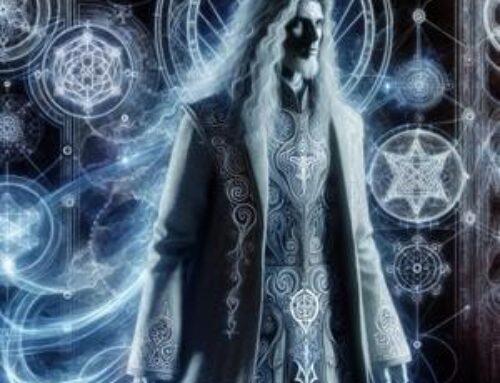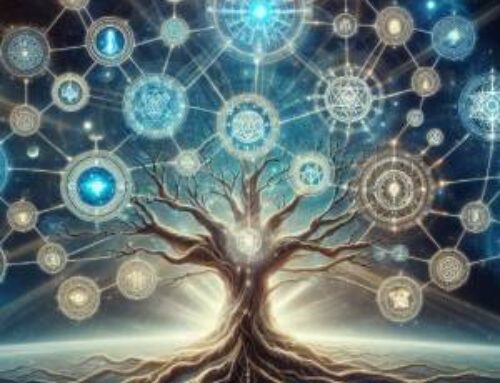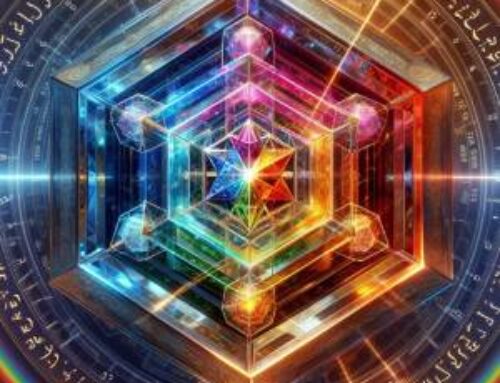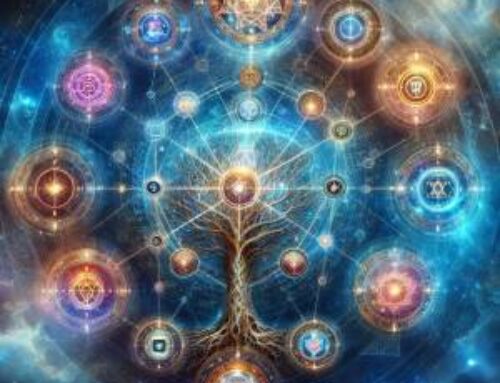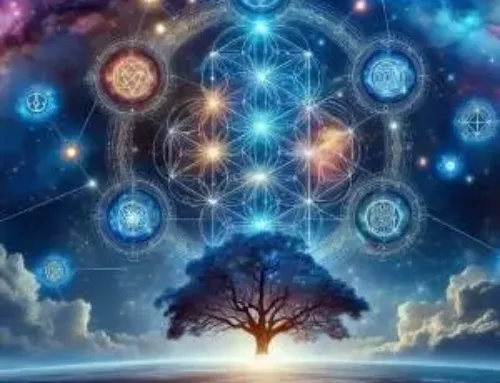Contents
- 1 Introduction
- 2 The Structure of the Tree of Life
- 3 The Path of Spiritual Ascent
- 4 Conclusion
- 5 FAQ
- 5.1 1. What is the Kabbalah Tree of Life?
- 5.2 2. How can the Tree of Life help in spiritual growth?
- 5.3 3. What are the main pillars of the Tree of Life?
- 5.4 4. What is the significance of Kether in the Tree of Life?
- 5.5 5. How do the Sephiroth interact with each other?
- 5.6 6. What role does the Hermetic Academy play in studying the Tree of Life?
- 6 References
Introduction
Ah, the Kabbalah Tree of Life—such a profound and intricate mystical diagram, is it not? It represents a comprehensive model of the universe and our human experience within it. Central to Kabbalistic teachings, this symbolic framework illustrates the path of spiritual ascent and the structure of divine emanation. Each component, known as Sephiroth, corresponds to different aspects of creation and consciousness. Quite fascinating, providing a map for understanding the complexities of both the cosmos and the inner workings of the soul.
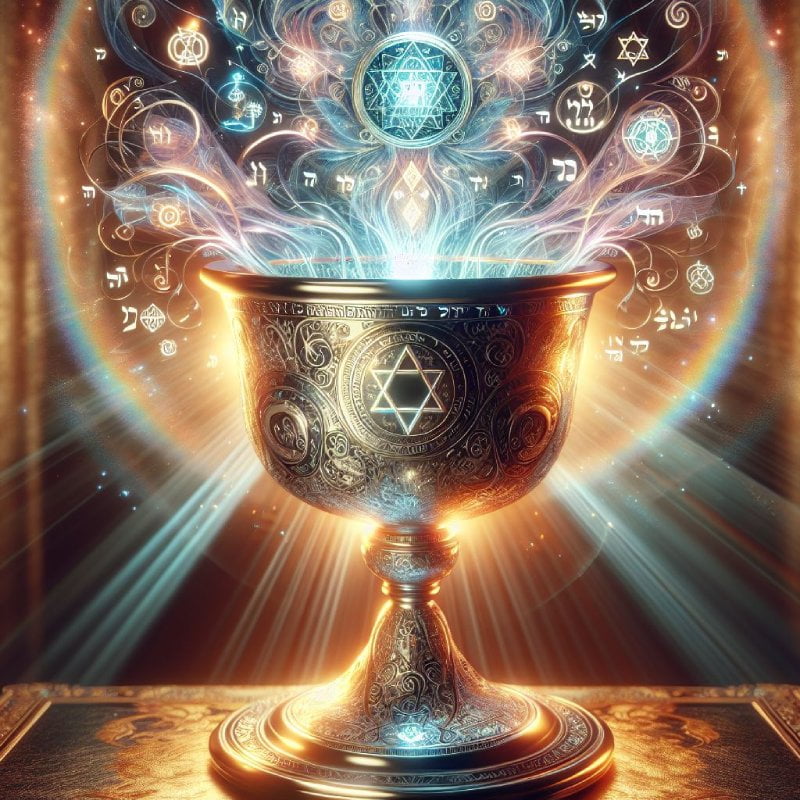
Now, the Tree of Life is not merely a static diagram (1); it is, in fact, a dynamic and living structure reflecting the ceaseless interaction between the divine and the human. This model not only maps the spiritual realms but also guides practitioners on their spiritual journeys, offering insights into the nature of existence and the steps toward spiritual enlightenment. Through understanding the Tree of Life, one can gain a deeper appreciation of the interconnectedness of all things and the divine blueprint that underpins reality.
The Structure of the Tree of Life
The Tree of Life comprises ten Sephiroth, each representing different attributes of the divine and stages of spiritual development (2). These Sephiroth are interconnected by 22 paths, corresponding to the Hebrew letters, which facilitate the flow of energy and consciousness between the spheres. Traditionally, the Tree is divided into three columns or pillars: the left pillar (severity), the right pillar (mercy), and the central pillar (balance).
- Kether (Crown): At the summit of the Tree is Kether, the source of all creation, representing the purest form of divine will. From here, all other Sephiroth descend. Kether symbolizes the highest level of consciousness, the divine spark within each individual.
- Chokmah (Wisdom): Positioned on the right pillar, Chokmah embodies the masculine aspect of creation and the dynamic force of wisdom. It represents the creative impulse and the raw energy initiating the process of manifestation.
- Binah (Understanding): On the left pillar, Binah represents the feminine aspect of creation, the receptive force that provides structure and form to Chokmah’s creative energy. It symbolizes understanding and the ability to shape divine wisdom.
- Chesed (Mercy): Found on the right pillar, Chesed represents love, kindness, and the expansive force of divine mercy. It is the principle of giving and benevolence, fostering growth and abundance.
- Geburah (Severity): Opposite Chesed, on the left pillar, Geburah embodies strength, judgment, and the restrictive force balancing Chesed’s expansiveness. It represents discipline and the power to enforce boundaries and uphold justice.
- Tiphareth (Beauty): At the center of the Tree, Tiphareth is the harmonizing sphere integrating Chesed and Geburah. It represents beauty, balance, and the perfect expression of divine love in the human heart. Often associated with the higher self or Christ consciousness, Tiphareth is truly a beacon of harmony.
- Netzach (Victory): Positioned on the right pillar, Netzach stands for endurance, persistence, and the force of passion and desire driving the creative process. It symbolizes victory and the ability to overcome obstacles through sheer willpower.
- Hod (Glory): Opposite Netzach, on the left pillar, Hod embodies intellect, communication, and analytical thought. It represents the glory of intellect and the ability to articulate and analyze creation’s principles.
- Yesod (Foundation): Located on the central pillar, Yesod channels and stabilizes the energies of the upper Sephiroth into the material world. It represents the subconscious, dreams, and the connection between the spiritual and physical realms.
- Malkuth (Kingdom): At the base of the Tree, Malkuth symbolizes the material world and the final manifestation of divine energy. It is the kingdom where all divine forces converge and become tangible, the realization of spiritual principles in the material realm.
The Path of Spiritual Ascent
Embarking on the journey through the Tree of Life is a path of spiritual ascent, guiding practitioners from Malkuth, the earthly realm, to Kether, the divine source. This journey involves harmonizing and integrating the energies of each Sephirah, leading to higher states of consciousness – a “cosmic” or “unitary” consciousness, with direct knowledge of a reality underlying the phenomenal world (3).
- Malkuth to Yesod: The ascent begins in Malkuth, recognizing the divine essence in the material world. The next step is moving into Yesod, connecting with the subconscious mind and the deeper truths within.
- Yesod to Hod and Netzach: From Yesod, the path splits into Hod and Netzach, balancing intellect and emotion. In Hod, practitioners learn to articulate spiritual principles, while in Netzach, they harness passion for spiritual growth.
- Hod and Netzach to Tiphareth: The paths from Hod and Netzach converge in Tiphareth, the center of beauty and harmony. Here, practitioners experience the higher self and integrate lower and higher consciousness aspects.
- Tiphareth to Geburah and Chesed: From Tiphareth, the journey continues to Geburah and Chesed. In Geburah, practitioners learn discipline and judgment; in Chesed, they experience divine love and compassion.
- Geburah and Chesed to Binah and Chokmah: Next, practitioners ascend to Binah and Chokmah. In Binah, they comprehend the divine structure of creation; in Chokmah, they tap into divine wisdom’s creative energy.
- Binah and Chokmah to Kether: Finally, the journey culminates in Kether, where practitioners experience pure divine consciousness and realize their true nature as sparks of the infinite.
Conclusion
The Kabbalah Tree of Life is a profound spiritual map guiding practitioners through stages of spiritual development and the realization of divine consciousness. By understanding and working with the Sephiroth and their paths, one can harmonize different aspects of oneself and ascend to higher awareness states. The Tree of Life serves as a powerful tool for spiritual growth, offering insights into existence and steps toward enlightenment.
FAQ
1. What is the Kabbalah Tree of Life?
A: The Kabbalah Tree of Life is a mystical diagram representing the structure of the universe and human experience. It consists of ten Sephiroth, each symbolizing different creation and consciousness aspects, interconnected by 22 paths.
2. How can the Tree of Life help in spiritual growth?
A: The Tree of Life provides a map for spiritual ascent, guiding practitioners through spiritual development stages. By understanding and working with the Sephiroth and paths, one can harmonize different aspects of oneself and achieve higher states of consciousness.
3. What are the main pillars of the Tree of Life?
A: The Tree of Life is divided into three pillars: the left pillar (severity), the right pillar (mercy), and the central pillar (balance). Each pillar represents different aspects of the divine and plays a crucial role in harmonizing the Sephiroth.
4. What is the significance of Kether in the Tree of Life?
A: Kether, the highest Sephirah, represents the purest form of divine will and the source of all creation. It symbolizes the highest level of consciousness and the divine spark within every individual, marking the spiritual journey’s culmination.
5. How do the Sephiroth interact with each other?
A: The Sephiroth are interconnected by 22 paths, corresponding to the Hebrew letters, which facilitate the flow of energy and consciousness between the spheres. These interactions illustrate the dynamic and living nature of the Tree of Life, reflecting the constant interplay between the divine and the human.
6. What role does the Hermetic Academy play in studying the Tree of Life?
A: The Hermetic Academy offers a structured approach to studying the Kabbalah Tree of Life, providing guidance and support for practitioners on their spiritual journey. Through courses, workshops, and personalized instruction, the Academy helps individuals deepen their understanding of the Tree of Life and its application in daily life.
References
(1) Rubenstein, E. (2020). The Tree of Life: The Kabbalah of Immortality. Hermetic World, Paphos.
(2) Mathers, S. L. M. (1887). The Kabbalah Unveiled. London: George Redway.
(3) Keutzer, C. (1982). Physics and Consciousness. Journal of Humanistic Psychology, 22, 74 – 90. https://doi.org/10.1177/0022167882222005.

